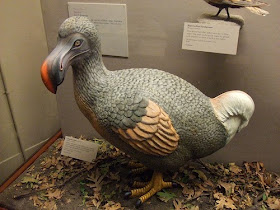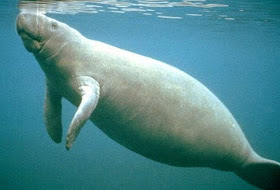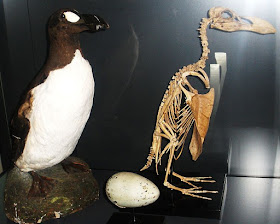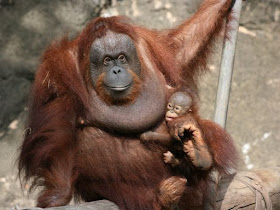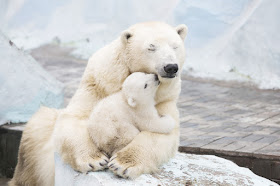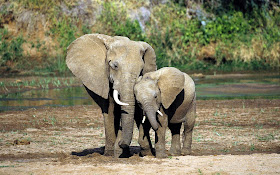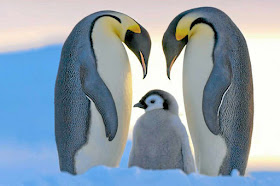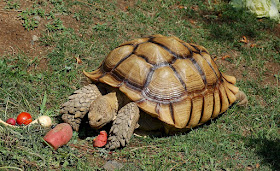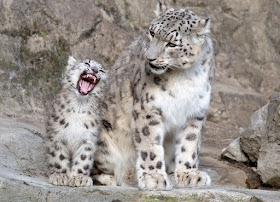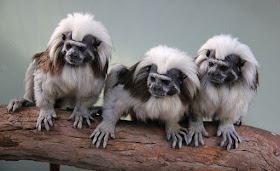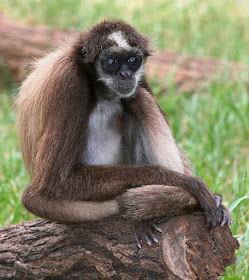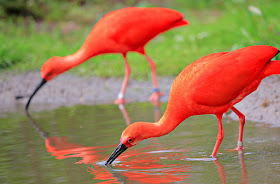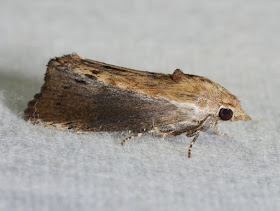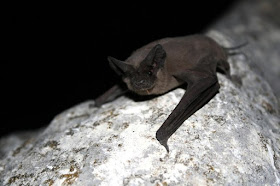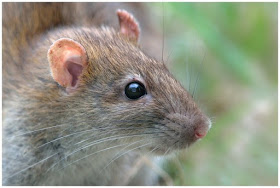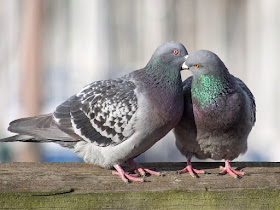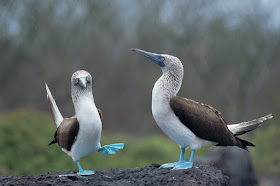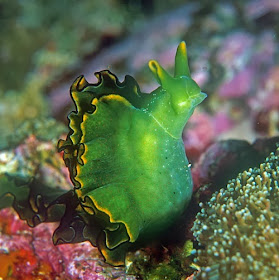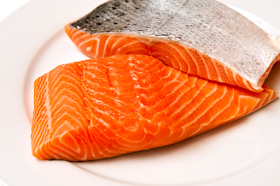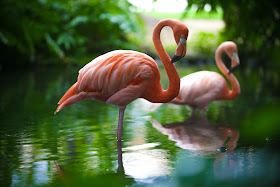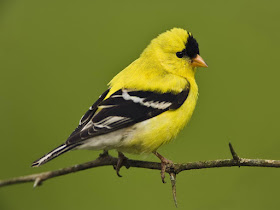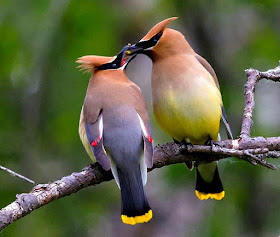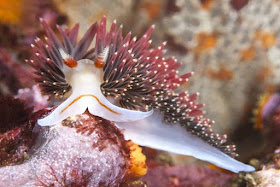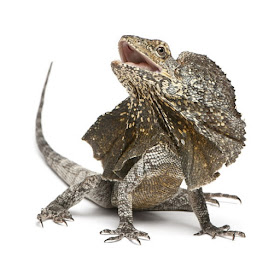Have you ever wondered what life on other planets might look like?
While images from Men in Black are probably running around in your head, there’s plenty of life already on earth that’s a little extra-terrestrial.
1. Matilda the alien cat.
The kitty-cat world’s answer to E.T.
But Matilda isn’t the only creature suited to life in a sci-fi movie – as these fantastic pics prove…
2. The Blobfish
Take the Blobfish. Bearing a startling resemblance to Flubber, it certainly wasn’t blessed with looks! That’s probably why it’s regarded as the world’s ugliest animal!
3. The Coffinfish
Found deep in the ocean is a sea toad that walks – literally. The Coffinfish is another that was abandoned when it came to the looks department, but its eerie appearance lends itself to something Will Smith might shoot as it leaps from a sewer!
4. The Axolotl
No this little creature isn’t a Pokemon, despite its magical appearance. The Axolotl wanders the sea floor near Mexico but its time on Earth is quickly running out as it is critically endangered.
5. The Seapig
Seapigs can be found roaming nearly all of the world’s oceans, but the chances are you’ll never actually see one as they live on the deep-sea floor. That’s probably a good thing given their potato-like appearance though.
6. The Shoebill Bird
Found in just a handful of locations across Africa, the shoebill bird is similar to a stork but could easily be mistaken as a fresh escapee from Jurassic Park.
7. The Giant Salamander
Completing our list is the largest amphibian left on the planet. The giant salamander can grow to be bigger than a person although its endangered status means finding one of that size is incredibly rare.
Wednesday, May 31, 2017
Tuesday, May 30, 2017
4 Animals We Ate To Extinction
4 Delicious Animals We Charbroiled Into Extinction - and 1 That Tasted Nasty But We Killed It Anyway
"Good to the last drop" proved to be a great slogan for Maxwell House coffee. But the "Good to the last existing representation of the species" tagline hasn't worked so well for these delectable creatures. Here are four animals that prove that slow and tasty never wins the race.
The Dodo
Bigger than turkeys and more naive than happy taxpayers, the dodo [wiki] didn't exactly have the best survival strategy on the block. Consider the evidence. Not only was the dodo a flightless bird, it also had tiny wings, a small tuft of curly feathers on its bum, and it laid only one egg a year. It's no wonder European sailors who landed on the shores of Mauritius in the early 16th century got a big laugh out of the clumsy bird, which, in addition to its previously lamented attributes, had absolutely no fear of man. The sailors also got quite a few meals out of the aves, even though they were said to be close to inedible (Dutch settlers called them walgvogel, or "disgusting bird"). No matter. Pigs, rats, and monkeys introduced to the island helped man kill off the bird by 1681. Which is why there aren't any Kentucky Fried Dodos today.
The Sea Cow
They were big, slow, tasty, and defenseless, all of which is a bad combination around a slew of hungry humans. A cold-water relative of the manatee and dugong, the sea cow was discovered by Europeans in 1741 when the explorer Vitus Bering and his crew were shipwrecked in the area between Siberia and Alaska. And since the adventurous lot couldn't really explore the land, they took to exploring their palate. Our shipwrecked gourmands quickly discovered that sea cow [wiki] meat tasted like veal and remained fresh for a surprisingly long time. And there was a lot of meat, too, since the beast reached as much as 26 feet in length and weighed up to 8 tons. They resembled a modern manatee, with looks like your mother-in-law - if your mother-in-law has big expressive brown eyes, a small head, external ears the size of peas, and bristling whiskers. Estimates are that only about 20% of the sea cows shot or harpooned were actually caught, but they all died. By 1768, the gentle, delicious beasts were naught but lip-smacking memories.
The Great Auk
Rich in protein, chock-full of nutritious fats and oils, and great for baiting fishhooks, this flightless seabird was, well, great. Found on the rocky islands and coastal areas on both sides of the North Atlantic, great auks [wiki] were like a somewhat smaller version of the dodo, and they had brains to match. Starting in the early 16th century, sailors began marching the clueless creatures up the gangplank and pushing them into the ship's hold by the hundreds. Unlike the dodo, however, the auk was considered great grub, and the tasty bird was hunted for its feathers, skin, and eggs to boot. Unfortunately, you'll never get to feast on the great auk's tender meat, and you have your European brothers to thank for it. The last pair was killed on an island off the coast of Iceland back in 1844.
The Passenger Pigeon
The naturalist John James Audubon once reported seeing a flock of passenger pigeons [wiki] so numerous, it took three days for them to fly over. And he wasn't exaggerating. In the early part of 19th century, the birds, which were slightly larger than mourning doves, were estimated to make up as much as 40% of North America's entire avian population. But the abundance of the creatures made them easy marks. Effortlessly hunted, the birds were mowed down mostly for food but occasionally for sport, which some "sportsman" bagging as many as 5,000 in a day. In fact, the bird filled entire train boxcars as they were shipped to markets in eastern cities. Unable to sustain themselves except in large flocks, the pigeons dwindled rapidly. In 1900, a 14-year-old boy shot the last wild passenger pigeon (boys will be boys). Fourteen years later, the last one in captivity died at the Cincinnati Zoo. Her name was Martha.
Monday, May 29, 2017
5 remarkable animal moms
It’s important to remember humans aren’t the only ones who take extraordinary steps to protect, nurture and raise their young. The animal kingdom is flush with moms that take the time to teach their babies how to find food and protect themselves against the elements. Here’s a look at five outstanding animal mothers going the extra mile for their young:
1. Orangutan
The bond between an orangutan mother and her young is one of the strongest in nature. During the first two years of life, the young rely entirely on their mothers for both food and transportation. The moms stay with their young for six to seven years, teaching them where to find food, what and how to eat and the technique for building a sleeping nest. Female orangutans are known to “visit” their mothers until they reach the age of 15 or 16.
2. Polar Bear
Attentive polar bear mothers usually give birth to twin cubs that stick by her for about two years to learn the necessary survival skills in the cold climate. The mothers den by digging into deep snow drifts, creating a space protected from the elements. They usually give birth between December and January and keep the cubs warm and healthy using their body heat and milk. The cubs leave the den in March and April to get used to outside temperatures before learning to hunt.
3. African Elephant
When it comes to African elephants, a new mom is not alone in guiding her young. Elephants live in a matriarchal society, so other females in the social group help a calf to its feet after birth and show the baby how to nurse. The older elephants adjust the pace of the herd so the calf can keep stride. By watching the adults, the calf learns which plants to eat and how to access them. The females regularly make affectionate contact with the calf.
4. Cheetah
Cheetah mothers raise their young in isolation. They move their litter—usually two to five cubs—every four days to prevent a build-up of smell that predators can track. After 18 months of training as hunters, the cheetah cubs finally leave their mothers. The cubs then form a sibling group that will stay together for another six months.
5. Emperor Penguin
After laying an egg, the mother emperor penguin leaves it with a male who protects the fragile hard shell from the elements. The mother then travels up to 50 miles to reach the ocean and fish. She later returns to the hatching site to regurgitate the food to the newly hatched chicks. Using the warmth of her own brood pouch, the mother keeps the chick warm and safe.
Wednesday, May 24, 2017
5 Animals you won’t expect to see in Cumbria
1. African Spurred Tortoises
African Spurred Tortoises are the largest tortoises of the African mainland, beaten in size only by Galapagos and Aldabra (an african island) giant tortoises. Some are captured for the pet trade, but they grow rapidly when young and are soon too large for most keepers. They are vulnerable and are threatened by habitat loss and grazing competition from livestock, and to some extent capture for eastern medicine.
Snow Leopards
2. Snow Leopards
Snow Leopards are an elusive, solitary big cat native to the mountain ranges of central Asia. They are adapted well to their cold habitat, as they have thick fur, large fluffy paws, long thick tail and an enlarged nasal cavity. These keep them warm by insulating against the cold, or by warming the air they breathe through the nasal cavity.
3. Cotton-Topped Tamarin
This species is found in tropical rainforest edges and secondary forests. It has been found in a variety of habitats from wetland tropical forest, to moist woodland forest and dry thorn forest savannah.
Brown Spider Monkey
4. Brown Spider Monkey
Brown Spider Monkey are social monkeys known for having a prehensile tail that acts as a fifth limb. They live in social mixed gender groups of 3-22 that split into smaller groups for foraging, where they primarily search for ripe fruit.
Scarlet ibises
5. Scarlet ibises
Scarlet ibises are a distinctive red ibis native to South America. They are brown as juveniles, but as they grow they develop red patches until they are entirely red, except for a couple of black wing tip feathers, and mature.
Tuesday, May 23, 2017
5 Cats That Cost A Fortune
People have been spending money on cats since the dawn of time. Egyptian Pharaohs and rulers would spoil their feline friends with gold and luxury goods. And modern pet owners are known to let their cats live lavishly too.
While many people may have pampered pets, there are a few cats that cost a small fortune just to own. Buying one of these could even cost as much as getting a new house!
Below are the five most expensive cat breeds in the world.
1. The Rare Ashera
This is a “hybrid” cat breed. The Ashera is made up of genes from the African Serval, Asian Leopard Cut, and domestic house cat. As a result, this feline acts like a regular cat but looks just like a leopard. It’s a unique look and one that many people will pay top dollar for.
To buy an Ashera you must place your order through the Lifestyle Pets Company. This business only breeds five Ashera cats a year. Because of how rare these cats are, expect to pay anywhere between $22,000 and $125,000.
While these cats may be expensive to buy, the price tag hasn’t deterred customers. Ashera cats are incredibly popular and the Lifestyle Pets Company usually sells out of them.
2. The Pricey Bengal
Unlike other cats on this list, Bengals are not rare. There are over 60,000 of them world wide and they’re quite a common pet.
Despite not being very “exclusive,” Bengals can still go for a high price. One English woman, named Cindy Jackson, paid $42,000 for her cat. Jackson bought her Bengal, named Fur Ball, because she was blown away by its beauty.
The Bengal is a hybrid between the Asian Leopard Cat and the Prionailurus Bengalensis Bengalensis. While it has the body of a house cat, the Bengal’s fur looks just like a leopard’s coat.
3. The Spotted Savannah
This is a very unique looking cat that is well known for its eye catching and distinct body. The Spotted Savannah is a hybrid of the African Serval and domestic house cat. This unique mix gives the Spotted Savannah an impressive size and the ability to leap huge distances.
While people pay all kinds of different amounts for this cat, the most expensive Spotted Savannah ever sold went for $22,000.
Lastly, if you plan to buy a Spotted Savannah, you’ll want to check with your local animal board first. In some countries, such as Australia, these cats are actually illegal.
4. The Hairless Sphynx
Many people know this breed by its nickname of “the alien cat.” When it comes to pets, the Sphynx has one of the most distinct looks of all time. This cat looks like it is hairless, has an oddly shaped head, and usually sports an over sized potbelly.
Sphynx cats are incredibly smart and require very little personal care. However, there are very friendly and love to curl up next to people.
Unlike some of the other cats on this list, the Sphynx is comparatively inexpensive. Many owners have been able to get theirs for as little as $3,000
5. The Energetic Peterbald
This is a Russian cat known for its high energy and bright blue eyes. Peterbald cats are also incredibly loyal and will follow their owners whenever they go.
The Peterbald is very similar to the Sphynx except for the fact that it has webbed feet and oval paws. Intrestingly, these unique paws give the Peterbald the ability to open doors and even pick things up.
Saturday, May 20, 2017
Scientists Discover Creatures That Haven’t Been Exposed to Sunlight for More Than 5.5 Million Years in a Romanian Cave
Throughout history, great explorers and scientists have worked hard to uncovered so many things on the planet over the last thousand years, so it looks like there are no great discoveries anymore. Is our planet still a mystery, or do we know everything about it? Has everything been discovered?
Lucky for us, that's not true, and when you see these photos, you'll understand why! Scientists found some creatures that are 5 million years old. Take a look and get ready to have your mind blown by this freaky discovery.
One of those amazing things that are yet to be completely uncovered is the Movile cave. This cave can be found in the country of Romania and was discovered in 1986.
Still, only a few people have been inside the cave.
Creatures in the Darkness
This little part of our world was hidden from the sunlight for millions of years, so evolution was completely different there.
Several really bizarre species live there, never having seen the light of day. Because of this, they had to adapt to the conditions.
Since there's no sunlight, the creatures do not need pigment to protect them from it. Also, most of them do not have an eyesight and the ability to see because they never needed it in the dark conditions.
But because they have evolved differently, they have some other body parts that are baffling scientists.
They discovered that these species have special limbs and antennae that help them navigate around in the dark.
A Scientific Mystery
What scientists are wondering about is how this place became so isolated and how any creature got inside the cave at all.
It's incredibly rare and strange that scientists found a 5.5 million-year-old species that we never even knew about.
J. Colin Murrell Shares His Expert Opinion
A microbiologist from the University of East Anglia said: “It’s very likely that the bacteria have been there a lot longer than five million years, but that the insects became trapped there around that time."
"They could have simply fallen in and become trapped when the limestone cast dropped, sealing the cave until it was discovered again in 1986,” he continued.
This place surely gives scientists a chance to find some new great discoveries, especially in the field of evolutionary biology, making it possible to understand evolution in general while they discover what took place here and why the creatures are there.
Tuesday, May 16, 2017
10 Animals With Amazing Hearing
Humans may be king of the animal world when it comes to evolution, but we are flailing down the hearing ranks. Although our hearing isn't as sensitive as some of these guys below (ours is a limited 2 to 5 kiloherz) - the way our brain processes vibrations into sound that then does amazing things to our memory and processing banks, evoking emotions is nothing less than magical. But, how does it all work? For more information on how humans hear, check out www.hiddenhearing.co.uk. However, let's not take away the glory from these hearing heavyweights, here's the top 10 animals with amazing hearing:
1. The greater wax moth
This little guy has the hearing crown, with a hearing frequency of up to 300 kiloherz, it can hear 150 times more than us and can even hear 100 herz above a bat (but as the bat is its number one predator it's going to need to outwit it somehow). Dr. Hannah Moir, told The Daily Mail: "Many species of moth have evolved ultrasound-sensitive ears owing to the predation pressure of echo-locating bats - this system is one of the best known examples of an evolutionary 'arms-race' between predator and prey."
2. Elephants
It's no surprise really, with ears that big, that the elephant is going to be in the top 10! Their hearing frequency is somewhere in between 16 herz to 12 kiloherz which is a huge range and they can hear at a frequency 20 times lower than us.
3. Bats
Bats come second only to the moth. They use a biological sonar system called echolocation to find their way around in the pitch black. Their frequency level is around 212 kiloherz.
4. Dolphins
Like bats, dolphins use echolocation, waiting for sound to bounce back, so it's like seeing with sound. Their frequency range is 75 herz to 150 kiloherz.
5. Cats
Cats have a good frequency range - at 45 herz to 64 kiloherz it's far better than ours, so there's no point trying to sneak up on your cat!
6. Dogs
A dog's hearing is similar to a cat, they hear better at a higher pitch and can even differentiate between their owner's footsteps and strangers. People have reported that their dogs know they are coming home before they even get there!
7. Owl
An owl's frequency range is between 200 herz to 12 kiloherz, and with their excellent eyesight and a head that can nearly turn 360 degrees you really don't want to be its potential prey!
8. Rat
Our friendly rodent has a better hearing range than the cat, which is just as well for them. At 200 herz to 76 kiloherz they can hear an incy-wincy spider coming down the drain pipe.
9. Horse
Horses need to have a good hearing as well as they actually have many predators in the wild - they are a flight animal and rely heavily on their hearing, which is much better than their sight. Their frequency range is 55 herz to 33 kiloherz. They can move their ears in the direction of the sound.
10. Pigeons
Pigeons have an incredibly low hearing frequency, something like 0.5 herz! This helps them to hear sound over long distance and to detect storms and helps them to navigate over long distances. According to OneKind they are only one of four animals that can recognize themselves in a mirror which was worth a mention in itself!
Monday, May 8, 2017
8 Animals That Get Their Color From Food
Charlie and the Chocolate Factory gives new meaning to “you are what you eat.” In the classic kids’ book, a girl named Violet Beauregarde chews some experimental blueberry-flavored gum—and it turns her blueberry-blue. But for some animals, that’s not too far from the truth: they get their colors from the food they eat. Here are eight critters that get their hues from their diet, plus two honorable mentions: a bird that’s shinier when it eats bugs, and a garden plant that switches between pink and blue.
1. BLUE-FOOTED BOOBIES
Native to warm waters of the eastern Pacific, blue-footed boobies (above) have, well, bright blue feet. They use this fancy footwear to attract mates via an awkward dance. The blue color comes directly from carotenoid pigments in their fishy diet, and healthier birds can afford to expend more pigment to intensify their foot coloration. So, a bird with brighter feet is a more attractive partner.
2. EASTERN EMERALD ELYSIAS
Its name is straight out of a fantasy novel, and that’s not even the coolest thing about this marine slug-like animal. The eastern emerald elysia has turned itself, at least in part, into a plant. It’s green, it’s shaped almost exactly like a leaf, and it can do something that animals usually can’t do: make food from the sun.
Plants are green because their cells have special green parts called chloroplasts that make energy from the sun. When the eastern emerald elysia eats some algae, it adds insult to injury by stealing the algae’s chloroplasts. Then it basks in the sunlight and absorbs the food that the chloroplasts make. It’s able to keep these stolen parts functioning for nearly a year—enough time so that it may never need to eat algae again.
3. SALMON
Salmon flesh has such a lovely hue that we call it, well, salmon pink. These fish get their color from the small shellfish they eat. Farmed salmon are fed natural or synthetic pigments so that their meat retains this familiar tint.
4. FLAMINGOS
Everyone knows that flamingos are pink and bluebirds are blue, right? Well, not really: Flamingos are definitely pink, but bluebirds’ blue color is an illusion.
Birds have different ways of looking colorful. A bluebird’s feathers have special structures that break up light and reflect just the blue parts. This makes them look blue—but only when light is hitting them in just the right way. If you take a bluebird feather and shine a light behind it, the feather will appear brown. The same is true of most other blue and green birds, from blue jays to green parrots.
Flamingos, on the other hand, have feathers that stay pink no matter which way you look at them. That’s because they’re full of pink-red pigments called carotenoids—carrots are orange because they contain a type of carotenoid. Flamingos get this pink stuff from the shrimp that they eat. If they don’t consume the right food, they’ll turn grayer. Zookeepers have to feed their flamingos food with the right pigments to keep them rosy.
5. GOLDFINCHES
Many other birds get their hues from carotenoid pigments. That’s true of American goldfinches, which are blazing yellow in breeding season. Female goldfinches size up males based on the vibrancy of their yellow: Brighter males are healthier and have better diets, so they’re more attractive.
6. CEDAR WAXWINGS
Cedar waxwings are small, sleek songbirds. Their tails usually have yellow tips—but some have red tails, and it’s all our fault.
Cedar waxwings are native to North America, and they love eating berries. A few decades ago, people brought Asian honeysuckle varieties to North America. These plants spread throughout the forests, and they produce big red berries that are impossible for a hungry waxwing to resist. The berries are rich in a reddish pigment that builds up in waxwing tails, turning them from yellow to orange.
7. NUDIBRANCHS
Related to snails, nudibranchs live in the ocean, and they’re mind-blowingly colorful. Really: feast your eyes on these hues. They’re so colorful, in fact, that there’s a blog matching different species to David Bowie’s outfits.
Many nudibranchs get their bright colors from their prey. One species, the red sponge dorid, is bright red and probably gets its pigment from the red sponges it eats. This has the added benefit of giving the red sponge dorid some amazing camouflage when it’s crawling on its spongy food.
8. FRILLED DRAGONS
Remember that scene in Jurassic Park when a neck-frilled dinosaur terrifies the hapless hacker Dennis Nedry, then spits poison on him? The movie’s creators got their inspiration from Australia and New Guinea’s frilled dragons—also known as frill-necked lizards. These remarkable reptiles flare their huge frills when they’re scared, or as part of territorial or courtship displays.
Frilled dragons’ frills come in different colors, from red to orange to yellow. The colors depend on their geographical location—and the variation is probably because of the different amounts of pigment in their prey.








